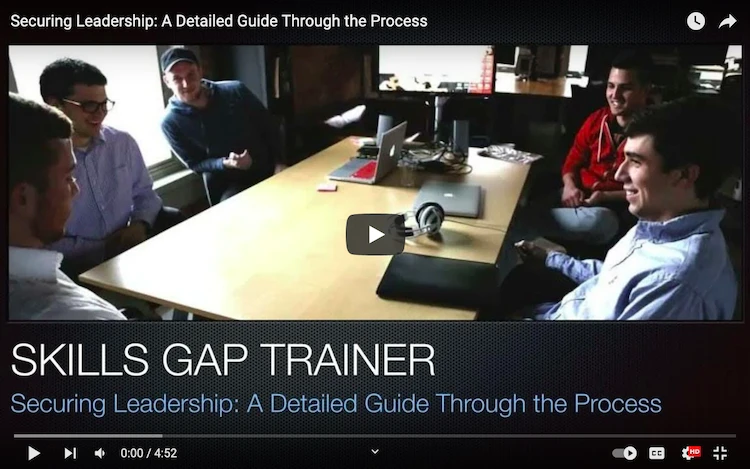The Intricacies of Leadership: Unveiling the Process of Securing Leadership in a Group
Leadership is not a position bestowed upon an individual overnight; it’s a process that involves strategic decisions, interpersonal skills, psychological awareness, and an understanding of group dynamics. To navigate this leadership labyrinth, we’ll break down the process into several interconnected steps that can provide a road map to those aspiring to become leaders.
Understanding the Current Scenario
At the onset of the journey to leadership, an in-depth analysis of the group’s current situation is vital. This initial step involves identifying the strengths, weaknesses, opportunities, and threats (SWOT analysis) within the group and its environment. The leader must display exceptional competence in management psychology, having a keen understanding of people and the potential disorders or conflicts that may disrupt group cohesion.
Crafting a Vision
Once a thorough analysis is done, the aspirant should use their intelligence and expertise to construct a vision – a path that promises a better future than the current status quo. This vision should not merely be an exercise in wishful thinking; it should present viable solutions to existing problems, backed by strategic planning and tangible objectives.
Winning Hearts and Minds
Selling this vision to the group is a pivotal step. This requires a combination of persuasive skills, confidence, and credibility. Here, understanding motivation, both from the perspective of positive and negative psychology, becomes essential. The leader needs to address the emotional responses of the group, navigate any potential conflict, and direct their energy towards achieving the shared goals.
To assuage any doubts about the achievability of the goals, the leader must exhibit an unwavering belief in the vision. This confidence can be communicated through professional demeanor and effective use of verbal and non-verbal cues during presentations or discussions.
Crisis Management
Interestingly, a crisis situation could become an opportunity to showcase leadership skills. Here, the aspirant should exemplify adeptness in conflict management and strategic negotiation. By presenting the situation as a challenge that requires collective effort to overcome, the aspirant can galvanize the group, directing their focus towards a common goal.
Proving Leadership through Action
Finally, the aspirant should demonstrate their leadership ability by guiding the group towards the desired objectives. This is where the aspirant’s competence in different leadership styles – charismatic, inclusive, strategic, and structured – comes to play. They should show adaptability, switching between styles based on the group’s needs and the situation at hand.
Throughout this process, the aspirant should be aware of potential biases, both their own and those of group members. Awareness of these biases, such as those that might surface during interviews or interpersonal interactions, can help the leader make more objective decisions and foster an environment of fairness and respect.
Leadership is also about investing in group members, recognizing their abilities and aptitudes, and providing them with opportunities for professional development. Addressing any skills gaps, providing career training, and continuous evaluation of competencies are critical to keeping the group engaged and productive.
In this digital age, the leader should be cognizant of the increasing relevance of technical skills. Addressing the technology skills gap, especially prevalent in regions like Canada and the USA, should be a priority. Leveraging MOOCs (Massive Open Online Courses) and other online training programs could be an effective way to upskill group members.
Leadership is a journey that requires continuous learning and adaptability. An effective leader is not just someone who can guide a group towards a goal but also someone who can inspire and motivate, manage conflict, negotiate strategically, and adapt to changing circumstances. By understanding the intricacies of the leadership process, aspirants can increase their chances of successfully securing leadership and guiding their groups towards success.
Related books and resources:
“Start with Why: How Great Leaders Inspire Everyone to Take Action” by Simon Sinek – This book delves into the importance of understanding the ‘why’ behind actions, crucial for crafting and communicating a compelling vision as discussed in your article.
“The Leadership Challenge: How to Make Extraordinary Things Happen in Organizations” by James M. Kouzes and Barry Z. Posner – Offers insights into practical leadership skills and strategies, supporting the article’s focus on guiding groups towards goals.
“Crucial Conversations: Tools for Talking When Stakes Are High” by Kerry Patterson, Joseph Grenny, Ron McMillan, and Al Switzler – Aligns with the article’s emphasis on persuasive skills and crisis management, providing techniques for effective communication.
“Conflict Resolution for the Helping Professions” by Allan Barsky – Complements the segment on conflict management, offering strategies for resolving disputes in professional settings.
“Influence: The Psychology of Persuasion” by Robert B. Cialdini – A key resource for understanding the psychological aspects of persuasion and motivation, which are central to winning hearts and minds.
“Leadership on the Line: Staying Alive through the Dangers of Change” by Ronald A. Heifetz and Marty Linsky – Provides insights into the risks and challenges of leadership, especially in times of crisis and change, as discussed in our article.
“Developing the Leader Within You 2.0″ by John C. Maxwell – Focuses on personal growth and development as a leader, which is essential throughout the leadership journey outlined in your guide.
“Drive: The Surprising Truth About What Motivates Us” by Daniel H. Pink – Explores the dynamics of motivation, relevant to the article’s discussion on motivating group members towards shared goals.
“The Culture Code: The Secrets of Highly Successful Groups” by Daniel Coyle – Offers insights into group dynamics and how leaders can foster a strong, cohesive team culture.
“Digital Leadership: Changing Paradigms for Changing Times” by Eric C. Sheninger – Addresses the leadership challenges and opportunities in the digital age, aligning with the article’s emphasis on navigating leadership in modern settings.
To see our Donate Page, click https://skillsgaptrainer.com/donate
To see our Instagram Channel, click https://www.instagram.com/skillsgaptrainer/
To see some of our Udemy Courses, click SGT Udemy Page
To see our YouTube Channel, click https://www.youtube.com/@skillsgaptrainer
